Types of Fur
Beaver Fur
Beaver, which was once native to Europe, is now found only in North America in quantity, despite beaver's beginning to make a comeback in Russia. It is an aquatic animal with shiny, coarse guard hair and soft, exceptionally thick underfur. The color range is wide. It may be dark brown on the back, shading to pale golden brown on the sides, or the entire fur may be pale or even silvery. Whatever the color, beaver should never have a red cast. The best beaver comes from Canada, the northern US, and Alaska. Northern beaver wears longest. Southern beaver has a thicker skin and is inexpensive in comparison to northern beaver. The fur texture is similar, although the underfur may not be as thick. Beaver is used both natural and plucked and sheared. Southern beaver is best when natural.
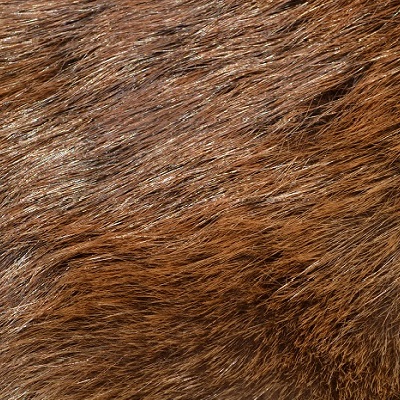
Natural Beaver
Natural beaver doesn't resemble the sheared beaver with which most of us are familiar. The look is entirely different. Watch for long guard hairs that give the fur a lustrous sheen. Natural beaver is ideal for men's coats because of the rugged look. It also makes striking casual wear for both men and women. Natural beaver is a durable fur. Its natural brown color may be dyed other colors.
Sheared Beaver
Beaver almost always used to be plucked and sheared to a velvety, soft pile. The natural color is sometimes dyed darker brown or beige or even bleached white. The fur may mat when wet and requires care and once-a-year cleaning.
Chinchilla Fur
The Chinchilla is a rodent, native to the high Andes of South America. The name comes from "Chincha", the South American Indians who used the hair for cloth, as did the Incas who conquered the Chinchas and the early Spaniards who defeated the Incas. Later, the blue-gray, exquisitely soft fur became so popular in Europe that Chinchillas were almost extinct by 1914. Today, all Chinchilla is ranch raised, as the result of a few breeding pairs imported to the US in 1924. The fur is very soft, silky, and dense. In fact, chinchilla fur has the highest hair density of any animal, with more than 20,000 per square centimeter. (This makes it impossible for parasites such as fleas to inhabit chinchillas, as they would suffocate.) Where humans grow one hair from each follicle, a chinchilla has more than 50. Color is silvery gray top hair and dark underfur. The best chinchilla has a slate blue color, often enhanced by brighteners, although mutation colors are now also produced. The small size and the fragility of the skin used to make chinchilla difficult to work with and very expensive. It's still expensive, but new dressing methods have made it easier to work with and have improved its wearability. No fur needs more care, however. The fur is very warm, despite being one of the lightest.
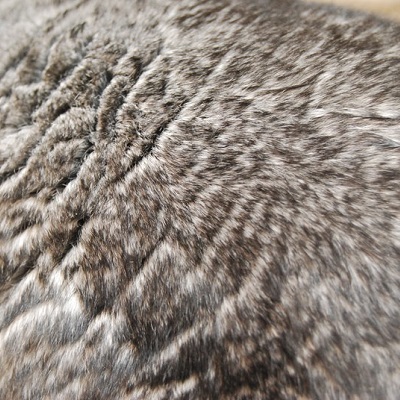
Coyote Fur
Coyote are native to North America. They are predators, and often considered as pests since they may attack domestic and farm animals. At one time, coyote pelts were considered worthless, but as conservation efforts aimed at wolves grew, fur manufacturers began experimenting with coyote. The long-haired fur, often pale gray or tan in color with thick, paler underfur, is durable and warm and makes luxurious coats for both men and women.
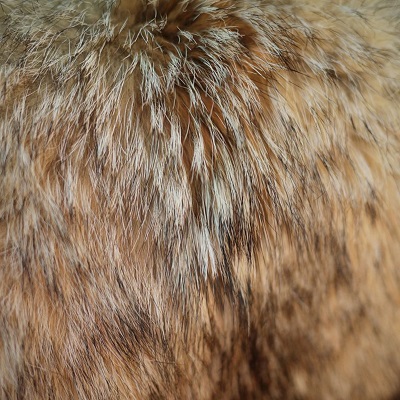
Fox Fur
Fox, which comes in many natural colors, is found all over the world. Because of its long hair and distinctive coloring, its popularity depends on fashion, especially in the US. Fox is easy to ranch and was ranched extensively in the United States at the height of its popularity. As its popularity waned, however, American fox farmers turned to raising mink, with the result that almost all fox today comes from ranches in Scandinavia (especially Norway), other European countries, and Russia, where it has always been fashionable. The ranching made possible the development of mutations such as silver and platina fox, that are variations of the natural colors. Fox wears well, although it needs regular cleaning and care to keep the fur fluffy and the skins soft and supple. The price depends on the popularity, but red (the most common) fox is the least expensive, with platina and white the most expensive. Clarity of color is important in fox, as is the fullness and density of the underfur and soft sleekness of the guard hairs. Fox is also dyed high-fashion colors.

Blue Fox
Blue fox is ranched extensively in Scandinavia. The color ranges from a blue brown to a real blue, as well as white with blue highlights.
Cross Fox
The name comes from the distinctive cruciform marking in the head and neck region of the fox. The color is basically red fox with yellow tints, while the cross is deeper in color with the red mixed with black. Some cross foxes are silver in color and are called silver cross fox.
Gray Fox
Most gray fox is American, with the best pelts coming from the northern states. It is silver gray with a slight tinge of red.
Kitt Fox or Corsac
North American Kitt foxes are gray fox. In addition, there is corsac, which comes from Siberia and other places in the former Soviet Union. In comparison to other foxes, it has little guard hair. What guard hair it does have is yellow with white tips, although the fur tends to be short and soft. Corsac fox is less well-wearing than most other foxes.
Platina Fox
The platina color was originally bred in Norway. It is a much lighter platinum color than silver fox, and the whiteness may be enhanced by slight bleaching.
Red Fox
Red fox is native to every continent with the exception of South America. The best red fox comes from northern climates and is deeply furred with silky, strong texture.
Silver Fox
Silver fox is entirely ranched. The fur is blue black in color with a white tip on the tail. The best silver fox is a true silver color with a black stripe.
White Fox
This fox has extremely thick underfur. There may be a slight blue shade along the back of the pelt. Like all white furs, it may require bleaching to preventing its turning yellow. It is less wearable than the more common kinds of foxes, although it is the ultimate in glamour.
Sheepskin
Lamb is one fur that cannot be described in a few words. It may be long-haired or short-haired. It may be flat with a wavy pattern or curly. It may be inexpensive to expensive. In addition, the fur industry is now using types of lamb that were seldom, if ever, used before. Each type of fur, therefore, has its own characteristics and colors, although almost all curly lamb is very durable.

Mongolian Lambskin
This lambswool has long, wavy, silky hair. It is sporty and attractive in coats and jackets, but needs special care because it can turn frizzy in wet weather. It is usually left its natural "lamb" color (off-white) or is bleached white.
Mouton Lambskin
Mouton lamb is sheared sheepskin. The hair is straightened, treated, and set to make a soft, water-repellent, close fur that may be dyed black or brown to imitate Alaska or northern fur seal or beaver. It may also be dyed other colors, although the natural color is generally off-white.
Shearling Sheepskin
Shearling is natural sheepskin that has been sheared (similar to mouton lamb), while the leather side has been sueded. The fur, or sheared side, is worn next to the skin. Shearling is the shepherd's coat that's traditional to many eastern European and Asian countries from Hungary to Afghanistan and points east. These coats are often embroidered on the suede side, and the fur side may have longer hair. Shearlings are also "traditional" jackets for western cowboys and ranchers. The coats and jackets are casual, sporty, long wearing and relatively inexpensive. The shearling side tends to be more closely sheared than on shepherds' coats. They do need care to keep the sueded side soft and clean, and the lamb side from matting, although the best American shearlings will not spot from rain. Until not so long ago, shearlings were considered heavy. However, better tanning methods have made the finest-quality shearlings much lighter, heralding their arrival on the fashion scene.
Persian Lambswool
Persian lamb is also called karakul, or caracul. It used to be called astrakhan as well. The sheep are raised for their meat and wool in Russia, Afghanistan, and other countries in that area, but they are also raised in Namibia as well. Persian lamb from the last area listed is trademarked Swakara. Bukhara is the finest Russian Persian lamb. Broadtail is lamb that is stillborn or unborn. Persian broadtail is lamb that is a few days old or less. Persian lamb (karakul, Swakara, and Bukhara) is lamb that is not older than 10 days. The difference in age allows the fur to develop from the moiré pattern to a tight, close curl. After that age, the fur gets longer and begins to lose the distinctive curl. Persian lamb goes in and out of fashion in the United States, but it has long been one of the most popular furs in Europe, especially Germany. The best-wearing Persian lambs are the natural browns, grays, and whites. Black Persian lamb is dyed to avoid the whiteness of the natural leather from showing through the curls. Persian lamb today, thanks to better breeding, comes in a wider range of natural colors and is lighter in weight than even a few years ago.
Tibet Lambswool
This lamb is similar to Mongolian lamb, except the silky hair is longer - as long as three to four inches - and may be frizzier. It, too, is off-white, although it can be dyed, and needs special care to keep it from frizzing unattractively. Both Mongolian and Tibet lamb can be straightened if they become too frizzy.
Mink
A mink coat is the best fur coat to many women - and to growing numbers of men. Mink are a member of the weasel family. Although they are found in the wild almost everywhere in North America and in some other parts of the world, the majority of mink are ranched. Very few wild mink are trapped any more because ranched mink are so superior in quality and color. American mink are the finest in the world, thanks to scientific breeding and rearing. Female mink are smaller and have softer, lighter pelts than the males. Consequently, more female skins are needed for a coat than male skins. It is just as warm, however, although the weight may be less. Mink is worked in many ways, and every part of the skin is used. It is a very durable fur that can last twenty years or more with care, depending on the quality. Prime quality skins are used natural and will wear the best. Dyed mink represents lesser quality skins - and both the lesser quality and the dyeing mean that it won't wear as well.
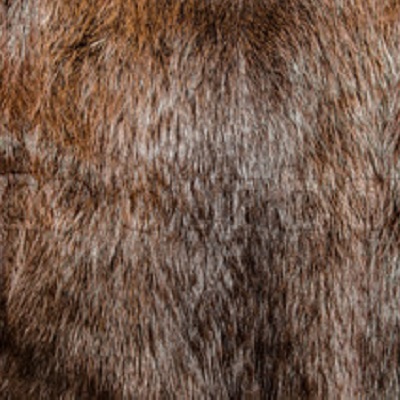
Natural Ranch Mink
The guard hairs should be silky and even in length, while the underfur should be dense and compact and paler in color. The mink should have a naturally lustrous sheen.
Mutation Mink
Again, the guard hairs should be silky and even in length. The color should be clear and uniform. The price depends on the availability and popularity of colors. At times, natural ranch mink may be more expensive.
Pieced Mink
A coat may be made, wholly or partially, of paws, gills and tails. It may also contain other pieces of mink. If the coat is patterned, such as to give a chevron effect, look for evenness of pattern and texture throughout the coat. Pieced coats may not wear as well as whole skin coats, because of the many seams. A good pieced mink coat should be reinforced on the leather side with nylon or ribbon at points of wear. Pieced mink coats can be very attractive, and they are much less expensive than natural mink coats that are let out or skin-on-skin.
Muskrat
Muskrat is one of the most versatile furs. It can be used many ways, including being dyed to resemble mink and plucked and sheared to resemble beaver. Hudson seal, which is no longer made but was popular in the 1920s and 1930s, was actually plucked and sheared muskrat dyed to look like Alaska, or northern, fur seal. The name muskrat comes from glands near the tail that give off an odor, musk. Musk is used in perfumes and cosmetics. Muskrat are found all over the United States, mainly in marsh areas that are unsuitable for agriculture. It is extremely hardy and prolific, which means that it would become a pest if not trapped. At times, in fact, it has become so numerous that it's left the marshes for farmlands where it's caused severe damage. The color, in general, is dark brown on the back shading to golden brown and silver on the flanks. Jersey, or eastern, muskrat is darker in color, almost black, and the most expensive. Eastern muskrat is long-wearing with care, although all muskrat wears well.
Rabbit
Rabbit is noted for being very affordable. It's also noted as being the great imitator, because of its use to imitate just about any other fur. Both wild and domestic rabbits are used, although most rabbit fur today comes from animals raised for food purposes, the skins of which would be thrown out if not used for fur. Rabbit may be left natural or it may be plucked, sheared, dyed, and processed in the effort to make it resemble other furs. As a result, it used to be called a wide variety of names, including lapin, sealine, beaverette and chinchillette. But nowadays it is legally required to be called rabbit, no matter how it's processed. Long-haired rabbit tends to shed. Thus, anyone who wears dark colors would be better off with a darker color or dyed rabbit than with a white or light-colored rabbit coat or jacket. In any case, the texture should be silky and the color uniform. Some rabbit is leather-edged to give it a longer life. Although rabbit may wear as long as five years or more, the average rabbit coat or jacket probably wears about three years. Keeping in mind that a rabbit coat may cost less than a cloth coat, though, it gives good value for the money.
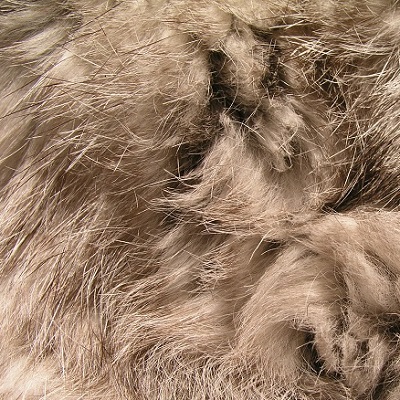
Rex Rabbit
The fur of this special breed is quite distinct from that of regular rabbits. According to the National Rex Rabbit Club (U.S.), the breed was the product of a recessive gene first spotted in France in 1919. Unlike regular rabbits, the Rex has no prominent "guard hair", resulting in a silkier, denser fur resembling chinchilla or sheared mink. Rex rabbits were imported into the U.S. in the 1920s.
Raccoon
Raccoon is a truly American animal and fur, and it's come a long way from the enormous, heavy coats that were a "must" for the 1920s college man and the Davy Crockett hats of the 1950s. Raccoon are found all over the United States and in southern Canada, with its fur getting thicker and longer the farther north the animal lives. Although the distinctive tail alternates black with tan rings, the body guard hairs are long and silvery with black tips and the gray sides shade to black along the middle of the back. The best raccoon has plentiful guard hair, heavy underfur, and a silvery color. If raccoon is plucked and sheared, the texture should be silky and the shearing even. Sheared raccoon, as is true of any sheared coat, needs special care to keep it from matting. Raccoon can also be bleached or dyed. The fur can be very durable with care, as the number of raccoon coats from the 1920s that were around a few years ago (and may even still be around) demonstrate. One day raccoon may not be truly American. Pairs have been resettled in Russian forests where they're said to be growing in number.
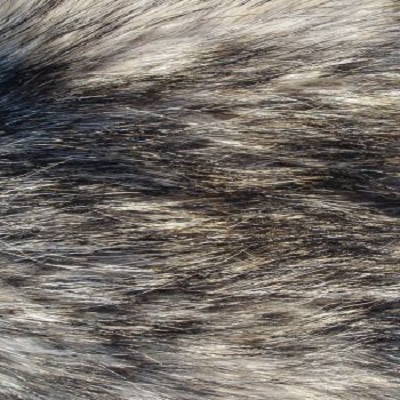
Skunk
Skunk are native to North America and South America. Both continents produce similar animals, although South American skunk is called Zorina. Skunk, with its distinctive white striping down the back and dark or black color, is probably familiar to most Americans especially for the evil-smelling spray they issue when threatened and when killed on the roads by cars. The stripe varies in width but is actually divided like a V and may be long or short. Some skunk fur may even be all black. The underfur is thick and long, keeping the silky guard hairs erect. It's worked both with and without the stripe. The color should be a glossy blue black and the stripe, if used, narrow. It wears well. The problem with skunk has been that it may have a slight odor when wet. Nowadays, this problem has been almost eliminated.



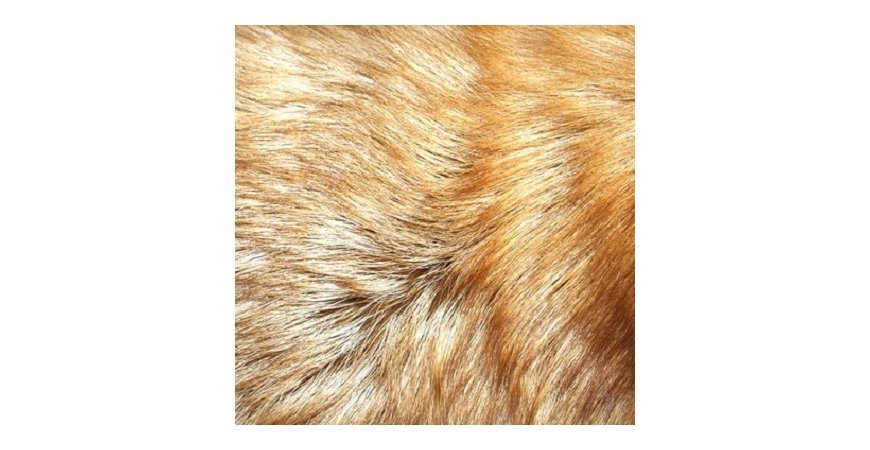
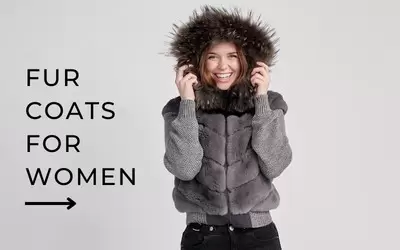





.webp)